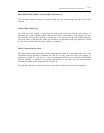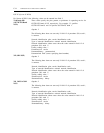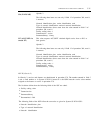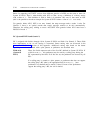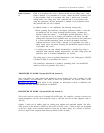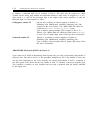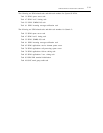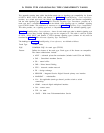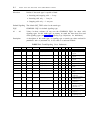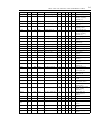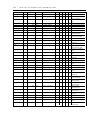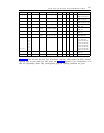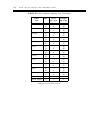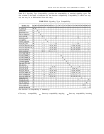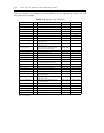
D. TRUNK TYPE AND SIGNALING TYPE COMPATIBILITY TABLES
This appendix contains three tables that define trunk type to signaling type compatibility for System
85 R2V1, R2V2, R2V3, R2V4, and Generic 2. Table D-1, Trunk/Signaling Cross-references,
provides, on a trunk type basis, the default signaling type, the feature and direction compatibility,
and the valid signaling types. Table D-2, R2V4 Alternate Signaling Type Translations, provides, on a
trunk type basis, a translation of other than the default, valid signaling type to “standard” signaling
type for R2V4 trunks. This translation is necessary to use table D-3, Signaling Type Compatibility.
This table provides, on a signaling type basis, a compatibility matrix for the standard signaling types.
Table D-1, Trunk/Signaling Cross-references, shows for each trunk type what its default signaling type
value is and what other possible signaling types can be assigned to it. This table is valid for System
85 R2V1, R2V2, R2V3, and Generic 2. R2V4 alternate signaling types (columns A1-A4) must be
translated by table D-2, R2V4 Alternate Signaling Type Translations.
The headings for table D-1, Trunk/Signaling Cross-references, are defined as follows:
Trunk Type
EQU
Feature
TTYPE Value
COMPOOL EQU for trunk type (TTYPE)
Defines the feature of the trunk type. Trunk types of like feature are compatible.
The feature abbreviations include:
●
●
●
●
●
●
●
●
●
●
●
●
●
APLT – advanced private-line termination (includes both CCSA and EPSCS)
CAS – Centralized Attendant Service
CO – central office
DID – Direct Inward Dialing
ETN – electronic tandem network
FX – foreign exchange
ISDN-PRI – Integrated Service Digital Network primary rate interface
MAIN/SAT – main/satellite
NA – Not applicable (trunk type doesn’t provide switch to switch
connectivity)
NDMI – network digital multiplexed interface
RA – remote access
TIE – tie trunk
WATS – Wide Area Telecommunications Service
D-1



